In the coming weeks, the first tenders for upgrading the particle accelerator will be issued. "There are many technologies in Israel that we need," the director of international operations told Techtime.
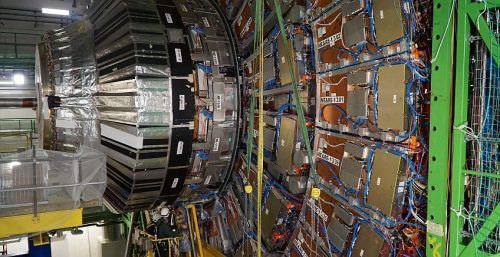
By Roni Lipshitz, this article was originally published on the TechTime website
European Research Institute CERN, which operates near Geneva in Switzerland the largest particle accelerator in the world, is looking for Israeli technologies for the next stage of its development. This was learned by Techtime during a tour of the giant particle accelerator last week.
The State of Israel joined CERN in 2014. Until then it was an observer member with partial rights. As of 2014, she is a full partner in the research body, a status that gives her the right to vote, access to all scientific findings, intellectual property in all areas developed at Saren and a great deal of opportunity in competing for Saren's tenders. Here in Geneva, Israel's lack is felt.
"Technologies were developed in Israel that were used in the construction of the world's largest particle detector, Atlas," explained the director of the coordination division between all CERN member countries, Dr. Pippa Wells. This includes control and data collection technologies developed by Israeli research institutions. For example, our control system (DCS) and the software that makes it possible to reconstruct the trajectory of the particles according to the information coming from millions of different sensors and the distribution of the information in a fast computer network (GRID), were developed in Israel.
"Compared to the number of Israelis participating in our activity, this is a very big achievement. In Israel there is also a very large population of theoretical physicists who were responsible for Atlas at the time of the discovery of the Higgs particle in 2012 (more on that later)".
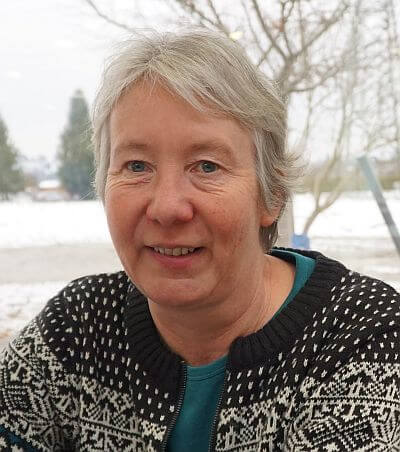
Ultra-fast electronics
"We came to the conclusion that we want many more Israelis in Saran. We want them to also compete for technical jobs that are not scientific jobs. We want Israeli electronics technicians and engineers. We are building the most advanced technological infrastructures in the world, so there are huge opportunities here in areas such as special electronic equipment, special materials, superconductors, very complex and special sensors, very high-power electronics for real-time decision-making and electronic systems that work at extraordinary speeds."
Pippa said that CERN asks Israeli technologists to be aware of the job offers posted at the address jobs.web.cern.ch. The timing is unique: "We are entering a new phase in the history of the particle accelerator: very significant upgrade work will soon begin. Our goal is to increase by 10 times the number of collisions of subatomic particles.
"In the coming weeks, the tenders will begin to be published to receive proposals from technology companies in Europe, so that we can operate it in the new format in 2025. In the Israeli high-tech industry there are many technologies that can help Saran, so we want the Israeli industry to be attentive to the publications, respond to the tenders and compete for them."
The flagship of world science
The Seren Institute is an unusual body: it began as a French laboratory for the study of elementary particles, and in 1954 became a research institute of the European Union. Today it is owned by 22 countries (including Israel since 2014) who manage it jointly. In many ways, this is a collaborative science utopia. Today Sern operates the largest particle accelerator in the world, which enables scientists in the member countries to study the most important topics in modern physics.
This vast physics laboratory is operated by a professional staff of 2,300 engineers, technicians and scientists. The studies are carried out by 12,800 scientists worldwide. Currently, close to 80 scientists from the Technion, Tel Aviv University and the Weizmann Institute of Science participate in research at Saran.
The core of the activity takes place around the particle accelerator. The accelerator moves two groups of protons in a circular orbit at a very high speed approaching the speed of light and in opposite directions. After they gain the necessary speed, and have very high energy, they are directed to a collision course within the detectors located at four points around the acceleration track.
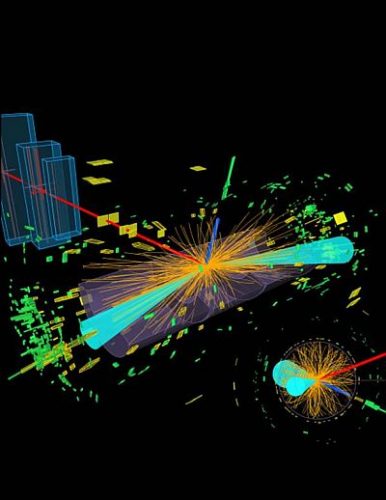
In a very small number of cases, two protons moving in opposite trajectories are directed. This is the object being measured: the collision releases enormous amounts of energy, which are manifested in many physical phenomena, such as radiation of various types, the appearance of new elementary particles, and more.
The acceleration is done in an extreme vacuum in a circular orbit with a diameter of 27 km that passes 100 meters below the surface of the ground in the territories of Switzerland and France. Electromagnetic coils made of superconductors cooled to a temperature of one degree Kelvin, accelerate groups of protons (leaving from a tiny helium tank) and bring them to enormous speed, to produce a high-energy collision.
The critical mission of FPGA components
The detectors are facilities that include several million sensors in different technologies. They are located around the collision site with the goal of capturing all the collision products, documenting them, characterizing them and sending the information to the large CER server farm. From there they are distributed to all scientists in the world participating in the Institute's research.
When the accelerator is working, it performs 100 million collisions per second. The data from each collision is collected, undergoing initial analysis using an array of several thousand FPGA components. These components run a real-time algorithm that checks all the sensors and reconstructs the particle trajectories created in the collision. At the same time, the algorithm also checks if it is an event of scientific interest. If so, the information is transferred to Saran's database in a high-speed optical communication network, where it undergoes a more in-depth analysis. If the event is defined as not interesting, the information is deleted, so as not to overload the communication network and the server farm with unnecessary load.
Extreme technology in the service of extreme science
The physical research carried out on the site explores the limits of knowledge, and therefore operates under unique extreme conditions. The protons are cooled to a temperature of only 0.1 degrees Kelvin.
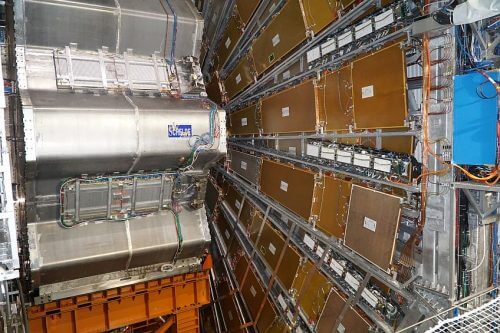
The electromagnetic coil in the CMS and ATLAS detectors is used to measure the speed of particles by bending their trajectory. It is the world's largest coil made of a superconductor: it weighs 105 tons, and is immersed in a tank of liquid helium to maintain a constant temperature of 2 degrees Kelvin. While operating the accelerator, the coil produces a current of 18,000 amps and a magnetic field of 3.8 tesla. In fact, its magnetic field is so strong that it distorts the structure of the detector, requiring the continuous adjustment of 16,000 moving mechanical parts in the facility.
The entire detector contains about 18 million sensors of different types, organized around the collision site inside a massive metal cylinder with a diameter of 25 meters and a length of 46 meters. Only an extreme infrastructure of this kind allowed Saran scientists to make the institute's most important discovery to date: the discovery of the Higgs particle.
The Higgs particle is a particle with a very short lifetime, the importance of which is that it proves the existence of a field with Higgs radiation, which, according to the theory, is responsible for the mass of the elementary particles. The particle was discovered in the two central detectors of Sarn (CMS, ATLAS) in 2012. The discovery gave the practical proof of the theory of the existence of the Higgs field.
A key element in the proof was the ability to detect muons, which are particles created when protons collide. One of the central pillars of the ATLAS detector is an array of detectors for detecting muons that were developed and built in Israel at Tel Aviv University, the Technion and the Weizmann Institute of Science. The Israeli detectors played a vital role in the discovery of the Higgs particle.
Where is the antimatter hiding?
Today, no less exotic experiments are carried out in Seren. As part of the ELENA project, scientists are currently producing antiprotons. This is a mysterious issue: according to the current theory of the structure of matter (called the "standard model"), for every particle there is an antiparticle, which has identical properties but has an opposite charge. But contrary to theory, it is very difficult to find antimatter in nature. The researchers were able to produce anti-hydrogen atoms and capture them in magnetic traps.
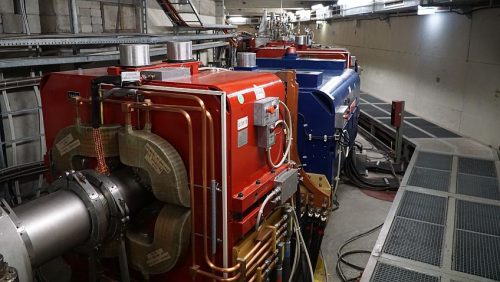
Now they are busy building a new accelerator as part of the Elena project: it is a small accelerator with a diameter of 188 meters that will allow groups of 10 million antiprotons to be accelerated every 10 seconds. The construction of the accelerator will be completed by 2019, and then a series of studies will begin that will focus on two central questions: the first is an examination of how antimatter reacts to gravity and whether it affects it differently than familiar matter. They will also try to find an answer to the more intriguing question: why is it difficult to find antimatter in nature? Why aren't there stars, planets and entire clusters made of antimatter?
The cosmic radiation produces rain
What do you do when research ends in an outdated particle accelerator from the 60s? The CLOUD project uses it to study the atmosphere. This is perhaps one of the most surprising experiments currently being carried out at CERN. During the visit, Techtime met with Prof. Jasper Kerbi, who managed to do the impossible: to convince the institute's management to carry out research in the fields of the atmosphere. The goal is to study the effect of cosmic radiation and solar radiation on the formation of clouds, in order to improve the ability to predict climatic changes.
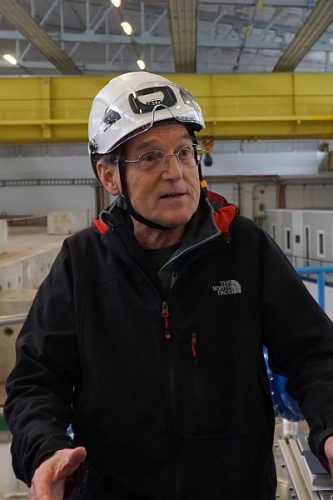
As part of the experiment, an airtight chamber with a diameter of 3 meters and a height of 4.5 meters was built, in which the researchers reproduce and produce a laboratory model of the atmosphere, and bombard it with protons that produce ionizing radiation identical to the cosmic radiation that affects the atmosphere. At the same time, strong UV sources represent solar radiation. Karbi: "Since we started the research in 2009, many phenomena have been discovered. We were able to show how the cosmic radiation affects organic molecules coming from the ground, causing them to bind to each other and reach a critical size that turns them into the condensation nuclei that produce the rain clouds.
"We were able to create a model of cloud production before the industrial revolution, which will allow us to understand how industrialization affects global warming. Today we believe that large events in outer space have an effect on our climate. Now we are checking whether events such as the explosion of a star (supernova) lead to short-term warming of the Earth."
Even after the only meteorological experiment carried out at CERN, special Israeli technology can be found. Karbi: "We have a special device developed in Israel, which allows us to produce water from oxygen and hydrogen through a unique combustion process. Without him we would not have been able to carry out the research, because we need complete control of all the elements of the experiment."
